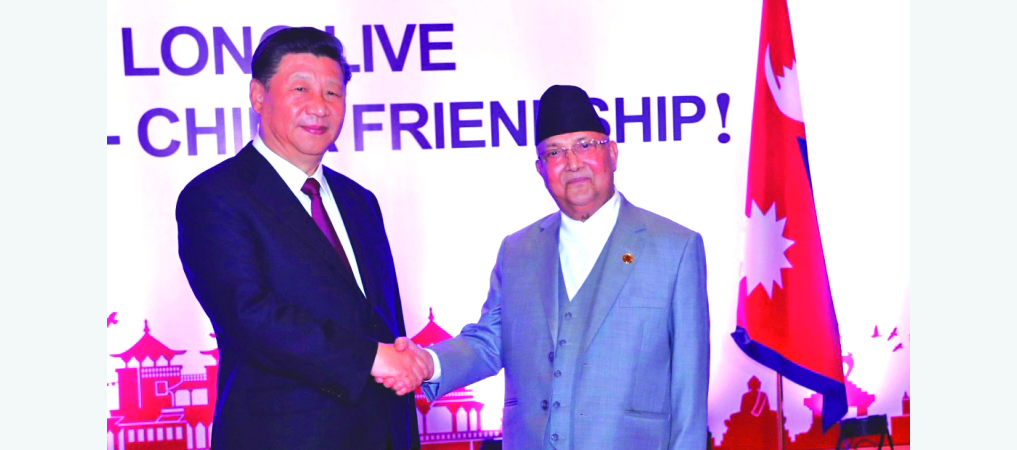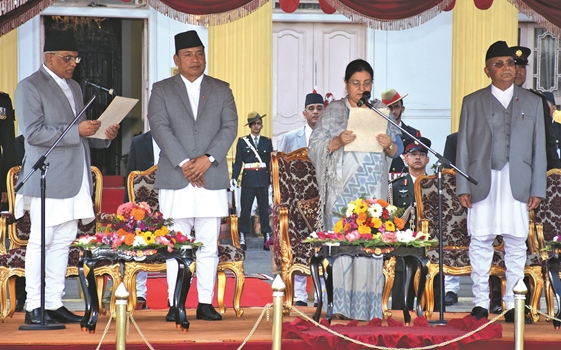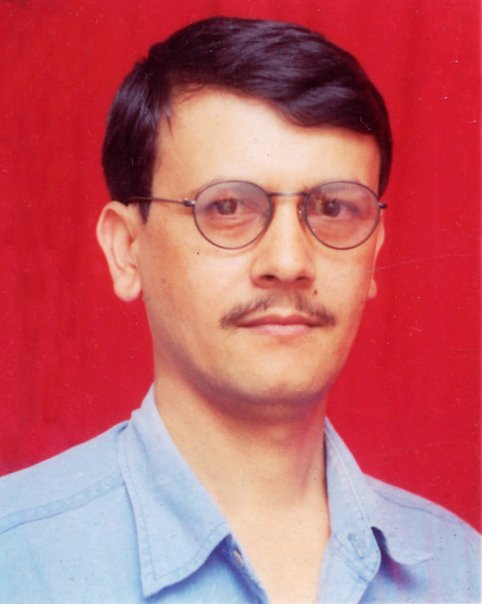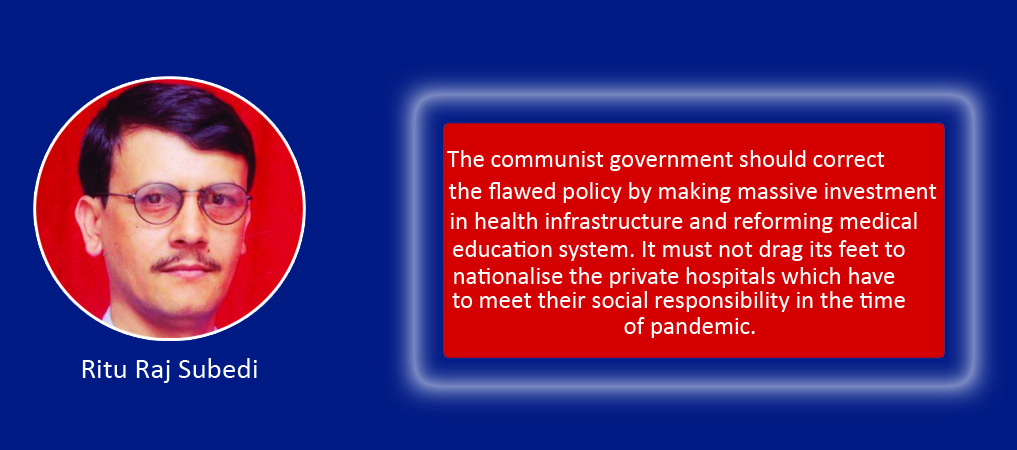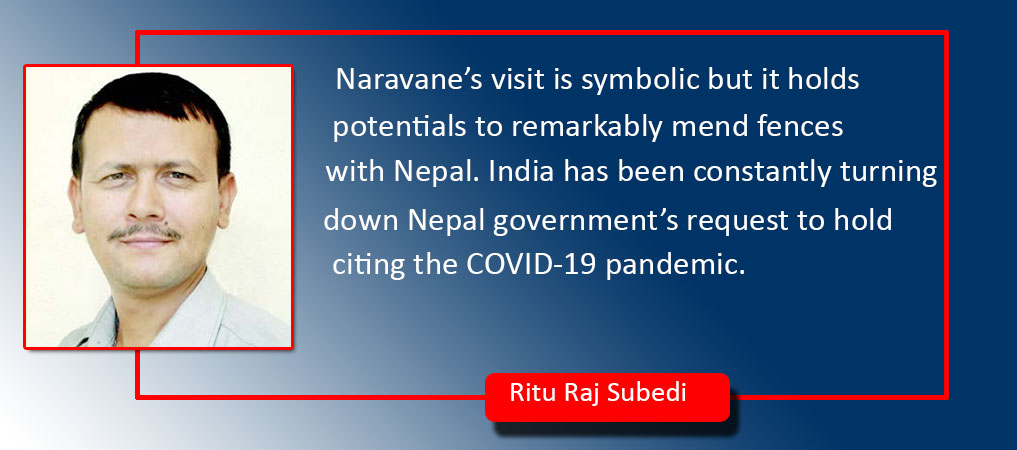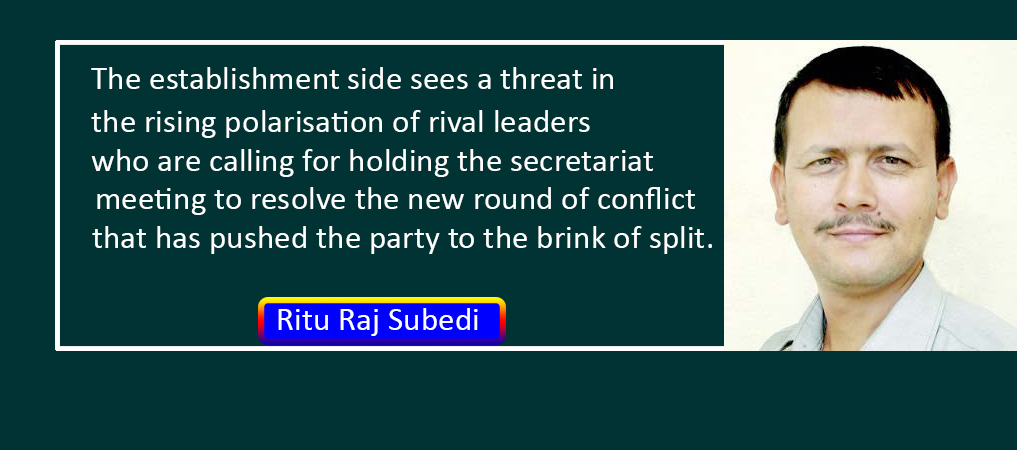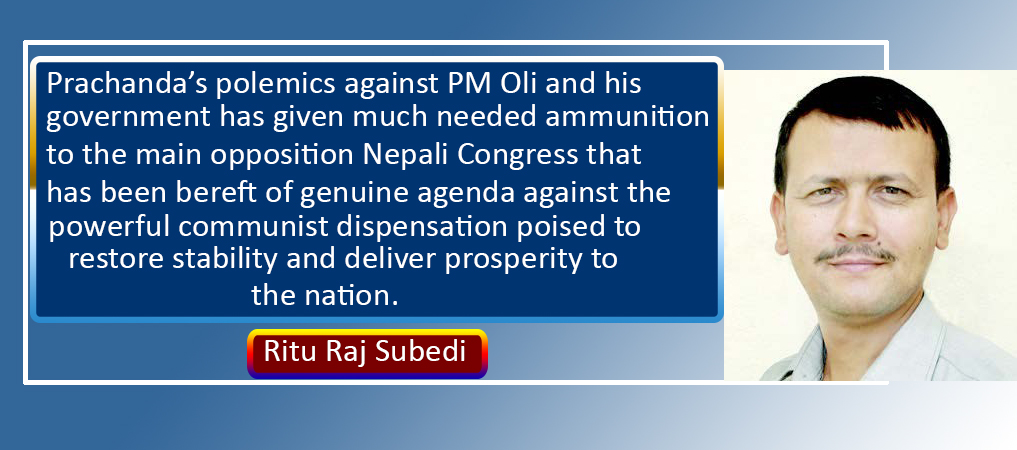The Moment Of Reflection

Ritu Raj Subedi
Every nation has own course of political evolution. Most of the nations have taken similar path of political changes and economic development. Many countries in Asia, Latin America and Africa suffered from brutalities of their colonial masters. They relentlessly fought for independence and democracy before starting their industrialisation drive. Unfortunately, some of them again fell into the clutches of domestic despots, forcing their people to deal with a double whammy. In that sense, Nepal has been lucky enough of not coming under the subjugation of any foreign rulers. However, she underwent painful ups and down before catching a democratic route to her modernisation.
Despite being one of the world’s oldest nations, with rich enlightenment tradition, Nepal had to spend a good chunk of her time for the cause of civil liberty, democracy and equality. Sacrifices of countless lives have recognised Nepal as a land of democracy, freedom, justice and peace for her cultural heritance of the tolerance of diversity. Nepalis have shown strong democratic consciousness and spirit of independence, enabling them to defeat any evil forces- be it domestic reactionaries or foreign invaders.
Indomitable spirit
It is in 1951 Neplis had demonstrated indomitable courage, tenacity and energy to topple the 104-year Rana oligarchy based on hereditary rule. Known as the sat salko kranti (the revolution of 2007 BS), it was the mother of all subsequent revolutions that took place in the country. The 1951 revolution marked the first democratic rebellion which took the nation on the path of constitutional democracy. It should have been termed as the first Janaandolan with the 1990 people’s movement and the 2006 April Uprising being the second and third respectively. The people and political parties must not suffer from collective amnesia and give little importance to this great political upheaval that converted Nepalis into equal citizens from raitis (subject) affirming popular sovereignty.
Sat Salko Kranti signifies the political awakening against a family oligarchy marked by lack of basic rights of expression and association. The rulers often used to resort to repressive means to protect their political dispensation. The newly established Praja Parisad and Nepali Congress had led an armed struggle against the Rana rule while nascent Nepal Communist Party waged full-fledged fight on its own. However, there was a long series of protests and revolt to topple the family rule of Ranas. Lakhan Thapa had spearheaded the home-grown armed uprising against the regime established by Jung Bahadur Rana by orchestrating a massacre infamously known as Kot Parba. One decade before the downfall the Ranas, four great martyrs had laid down their lives against it. These brave souls had invoked the ideas of justice, liberty and compassion enshrined in the Hindu classics Geeta to liberate the nation from Ranarchy.
The rays of first democracy disappeared one decade later, with the kingship assuming authoritarian role under rubric of party-less Panchyat system that lasted 30 years. The multiparty democracy reinstated in 1990 had no smooth sail either. Quarrelsome political leaders failed to draw up a common blueprint to bolster the new system. As a result, it plunged into a deleterious instability. Multiple crises triggered by dysfunctional parliamentary system, Maoist insurgency and massacre of entire family of king Birendra eventually paved the way for ex-king Gyanendra to usurp power. His botched up attempts to push ‘controlled democracy’ backfired on him, ending the 240-year-old monarchy.
Nepal had ushered into a federal democratic republic based on the new constitution promulgated in 2015. However, the government formed by Nepal Communist Party (NCP) in 2018 had also failed to complete its full term in office. The country now stares at vicious round of instability in the wake of the dissolution of House of Representatives (HoR), vertical split in the ruling NCP and roaring street protests from many sides.
The continuous failure of democratic project has given rise to frustration and alienation among the people. In the last seven decades, the country experimented with seven constitutions. Why does every constitution fail to deliver? Why could the leadership not translate the promise of revolution into the peace and prosperity of people? Why leaders can’t learn mistakes from history and are condemned to repeat it time and again? These are the pertinent questions and the leadership must offer plausible answers to them. Nepali constitution is inclusive, secular, federal, democratic, republic and progressive. It carries oodles of provisions to catapult Nepal into a robust welfare and socialist state. However, the statute is just a consensus roadmap based on the existing power-equation. It can be a living document only if its ideals are translated into a reality.
Democratic leadership
Dr Thomas Meyer has rightly observed that democracy needs true democrats who can translate the popular vision into action. So the nation is in the dire need of bona fide democratic leadership who can understand our aspirations, rise above the partisan and geopolitical interests, and devote themselves to the grand nation-building tasks. Democratic citizenship and civic competence are the key to strengthening Nepali democracy. Informed and enlightened citizens have the guts and power to hold politicians accountable to their words and deeds. On the day of the celebration of democracy, both leaders and citizens must commit to embrace constitutional culture and practice value-based politics so essential to the consolidation of federal democratic republican set-up.
(Deputy Executive Editor of The Rising Nepal, Subedi writes regularly on politics, foreign affairs and other contemporary issues. subedirituraj@yahoo.com)
Recent News

Do not make expressions casting dout on election: EC
14 Apr, 2022
CM Bhatta says may New Year 2079 BS inspire positive thinking
14 Apr, 2022
Three new cases, 44 recoveries in 24 hours
14 Apr, 2022
689 climbers of 84 teams so far acquire permits for climbing various peaks this spring season
14 Apr, 2022
How the rising cost of living crisis is impacting Nepal
14 Apr, 2022
US military confirms an interstellar meteor collided with Earth
14 Apr, 2022
Valneva Covid vaccine approved for use in UK
14 Apr, 2022
Chair Prachanda highlights need of unity among Maoist, Communist forces
14 Apr, 2022
Ranbir Kapoor and Alia Bhatt: Bollywood toasts star couple on wedding
14 Apr, 2022
President Bhandari confers decorations (Photo Feature)
14 Apr, 2022



